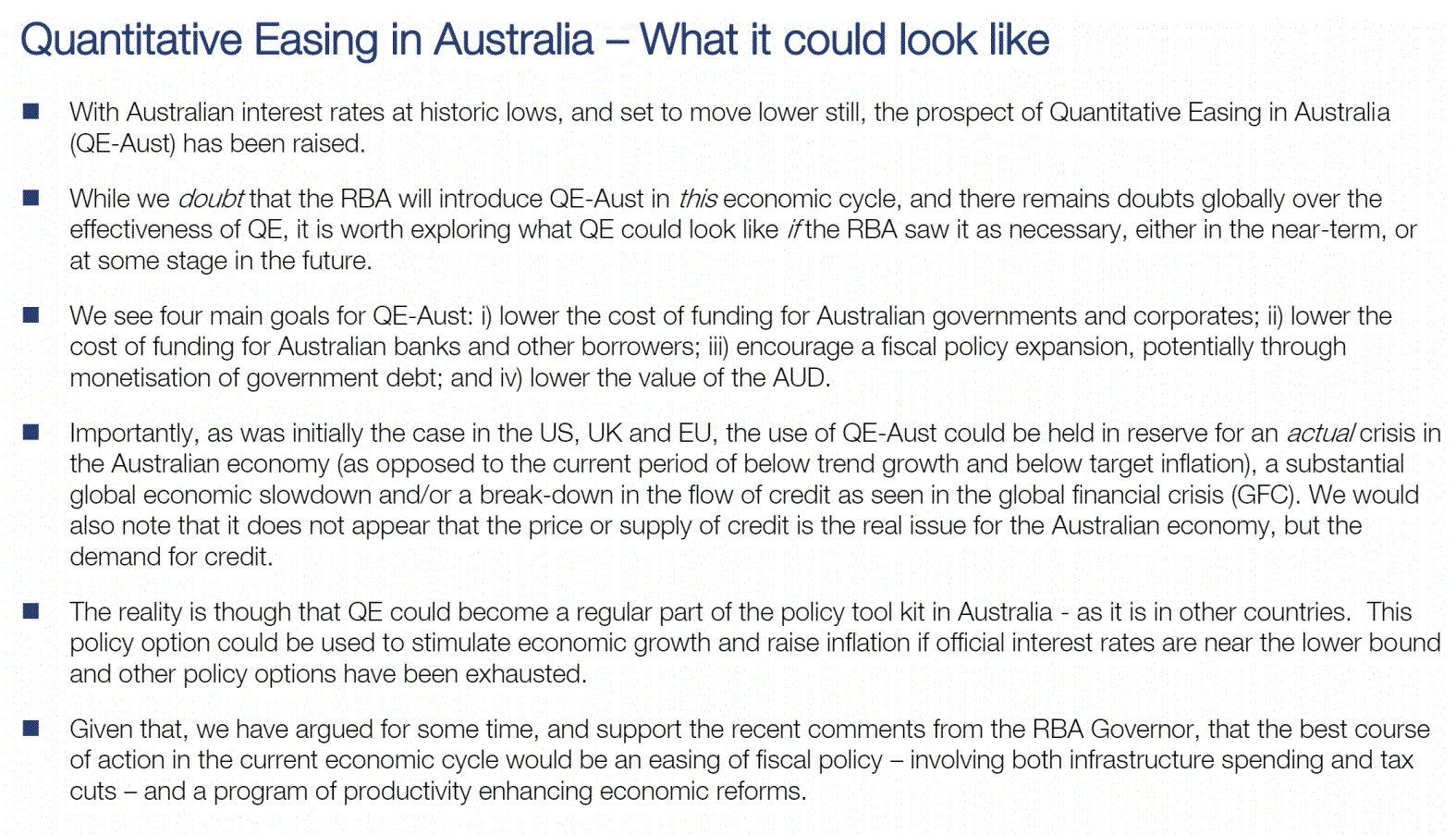Via CBA:
And more:
Commonwealth Bank’s economics team, which is tipping another 25 basis point cut to the cash rate in August, which would reduce it to 1 per cent, is doubtful that QE will be introduced “in this economic cycle,’’ arguing there is significant stimulus in the pipeline.
…CBA estimates that a local QE program might be equivalent to only about 4 per cent of GDP, compared with the US version (16 per cent of GDP), the eurozone’s (20 per cent), the UK’s (25 per cent) and Japan’s (80 per cent). Those economies were, of course, responding to a severe financial crisis and deep economic recessions.
The most obvious way to lower market interest rates would be for the RBA to buy Australian Commonwealth government bonds…it would also lower swap rates, allowing companies borrowing at variable rates to swap into fixed rate debt and lock in very low rates at low cost.
They also said that, as has occurred in Europe and Japan, the RBA could buy Australian dollar-denominated corporate bonds, but made the point this would present significant political and liquidity challenges.
The RBA could also lower the cost of funds for banks, either by intervening directly in the bank bill swap rate (BBSW) market, or by expanding its investment in repurchase agreements, where it sells securities to the banks and then buys them back, usually overnight. A modest expansion of its repurchase agreements activity would in turn lower the BBSW rate, the benchmark for most interest rates in the economy.
…The federal government could also, the CBA economists say, issue debt for a major infrastructure spending program or tax cuts or even “helicopter money’’ – cash deposited directly in people’s bank accounts – that the RBA would acquire.
A side-effect of any QE program would almost certainly be a depreciation of the Australian dollar – the economists estimate it would fall between 2 and 5 per cent against the US dollar – which would also help boost the economy.
Fair enough but I wonder how much the RBA can lower BBSW. If circumstances are so inclement as to warrant QE then BBSW might rise no matter what it did, owing to counter-party risk not lack of liquidity, which is what happened during the Hayne Royal Commission. This is the difference between liquidity and insolvency risk.
As well, why buy Aussie long bonds when circumstances would already see yields at record lows. This would only become necessary if Australia were experiencing some kind of massive external shock with markets dumping Aussie debt.
Also overlooked is the RBA buying bank’s unsecured debt which would do more for lowering borrowing costs than a fruitless effort to suppress BBSW.
It would better to cut straight to “helicopter money” anyway. The RBA’s independence is already shot to pieces as it campaigns for SocMo’s tax cuts package. We don’t need higher asset prices versus the alternative of higher domestic demand and a lower AUD.
Helicopter money is QE for the people not banks.


